The Recoleta Cemetery in Buenos Aires stands as a striking testament to the power and aristocracy that have shaped Argentina’s history. This architectural marvel, with its intricate mausoleums and elaborate sculptures, serves as the final resting place for the country’s elite, reflecting the opulent past of the city. As visitors wander through the cemetery, they’re not only captivated by the grandeur of individual legacies but also prompted to consider the socio-economic dynamics that have long influenced Argentina’s trajectory. Delving deeper into this iconic site offers a unique opportunity to unravel the complex tapestry of the nation’s identity.
Key Points
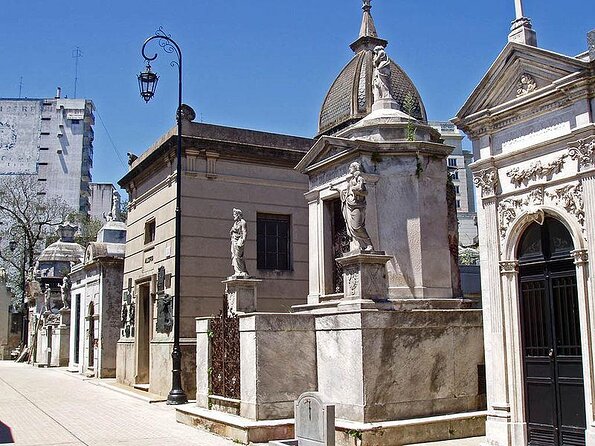
- Recoleta Cemetery serves as a symbol of Argentina’s aristocratic legacy, housing the final resting places of the country’s political and economic elite.
- The cemetery’s architectural grandeur, with intricate mausoleums and Neo-Gothic structures, reflects the opulence and power of Argentina’s upper class.
- The Duarte family tomb, a prominent feature in the cemetery, exemplifies the lavish displays of wealth and status among the Argentinian aristocracy.
- Recoleta Cemetery provides insights into the historical power dynamics and social stratification that have shaped Argentina’s development over the past century.
- The cemetery’s continued significance in Buenos Aires’ cultural landscape highlights the enduring influence of the country’s former aristocratic class.
Overview of the Tour
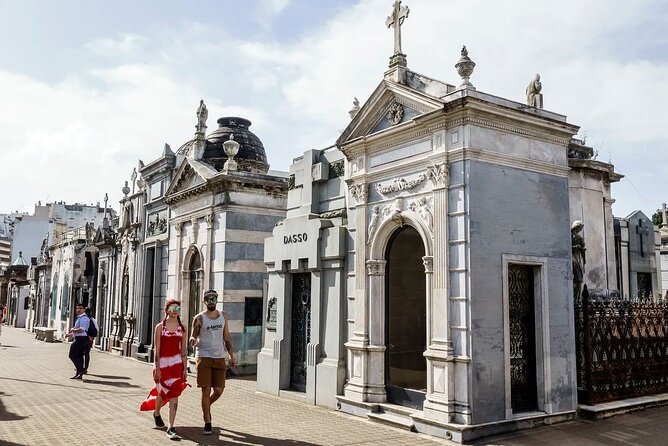
The tour focuses on exploring Buenos Aires from an anthropological perspective, delving into the city’s historical past to better understand its present.
It starts at the Rapanui Store and concludes at the iconic Recoleta Cemetery, addressing questions about Buenos Aires’ identity, the significance of the Recoleta Cemetery, the Belle Époque era, and Argentina’s economic history.
With a 100% recommendation rate from 15 reviews and a Badge of Excellence, this tour promises an engaging and informative experience for travelers seeking to explore the multi-faceted nature of the Argentinian capital.
You can also read our reviews of more tours and experiences in Buenos Aires.
Tour Details and Logistics
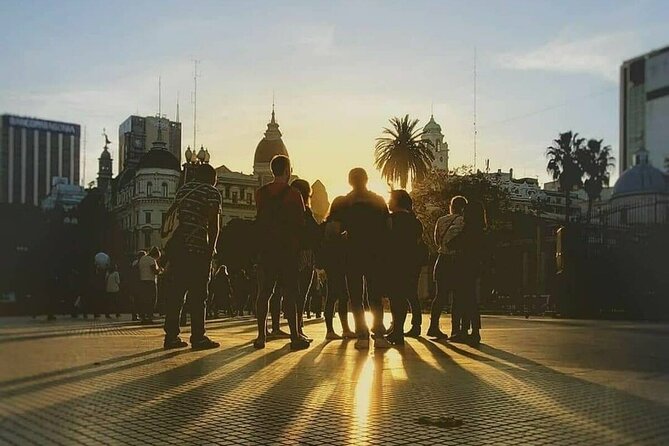
This tour comes highly recommended, with 15 reviews and a 100% recommendation rate, as well as a Badge of Excellence.
The price starts at $23.00 and varies by group size, with a maximum of 8 travelers per tour. Free cancellation is available up to 24 hours before the experience starts.
Tickets to the Recoleta Cemetery, which costs AR$ 14.320 and can only be paid by credit or debit card, aren’t included in the tour price.
The tour is accessible by public transportation and is wheelchair and stroller accessible.
Meeting and Ending Points
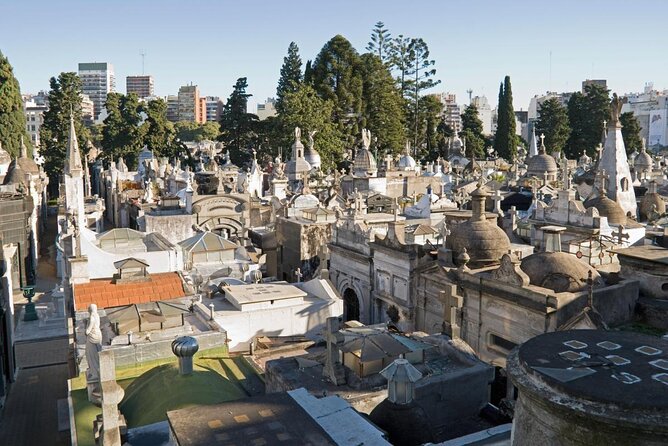
The meeting point for the tour is Rapanui, located at Av. Santa Fe 772 in Buenos Aires.
From this starting point, the tour explores the city’s historical and cultural landmarks.
The tour concludes at the Cementerio de la Recoleta, situated at Junín 1760.
Both the meeting and ending points are accessible by public transportation, making the tour conveniently located for travelers.
The tour is wheelchair and stroller accessible, ensuring accessibility for all participants.
With the meeting and ending points strategically chosen, the tour provides a comprehensive and immersive experience, allowing visitors to explore the rich history and identity of Buenos Aires.
Key Stops and Highlights
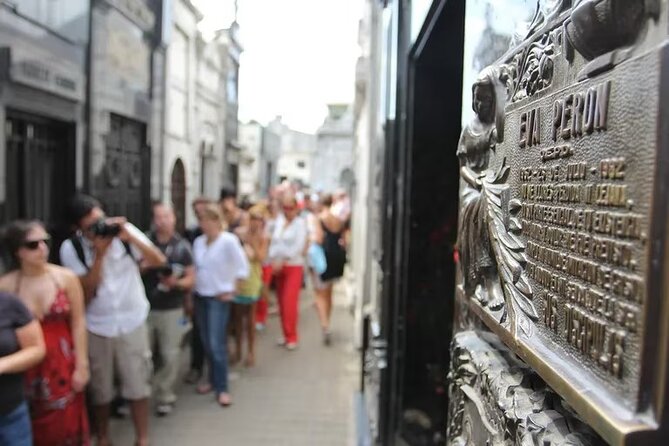
The tour starts at the Plaza General San Martín, where the guide provides an introduction to the city’s historical context, spending around 30 minutes at this free admission location.
Next, they visit the Estación Retiro San Martín, the largest train station in Latin America, which allows discussion of Argentina’s export-oriented agricultural economy, taking 20 minutes.
The tour also includes 7 additional stops at significant historical sites throughout Buenos Aires, providing a comprehensive understanding of the city’s past and present.
These carefully curated locations offer valuable insights into Buenos Aires’ identity, the Recoleta Cemetery, the Belle Époque, and Argentina’s economic history.
Traveler Experience and Reviews
Fifteen reviews with a 100% recommendation rate have earned the tour a Badge of Excellence.
Travelers highlight the knowledgeable guides and engaging interactions, appreciating the informative and enjoyable nature of the experience. As one reviewer noted, it’s a "perfect tour for nerdy travelers."
Another exclaimed, "Great experience!"
Key highlights among traveler feedback include:
- Informative and enriching historical context
- Passionate, knowledgeable guides
- Opportunity to explore Buenos Aires’ identity
- Fascinating insights into the Recoleta Cemetery
- Engaging discussions on Argentina’s economic history
Exploring Buenos Aires’ Identity
This tour offers a unique opportunity to explore Buenos Aires’ evolving identity from an anthropological perspective.
Delving into the city’s storied past, it examines how historical developments have shaped the present-day character of this vibrant metropolis.
From the grandeur of the Belle Époque to the economic ebbs and flows that have defined Argentina, this experience provides invaluable insights into the complex tapestry that’s Buenos Aires.
By engaging with the symbolic significance of landmarks like the Recoleta Cemetery, travelers gain a deeper understanding of the social hierarchies and cultural nuances that underpin the city’s identity.
This holistic approach illuminates the multifaceted nature of Buenos Aires, revealing the intricate interplay between its past and its ever-changing present.
The Grandeur of Recoleta Cemetery
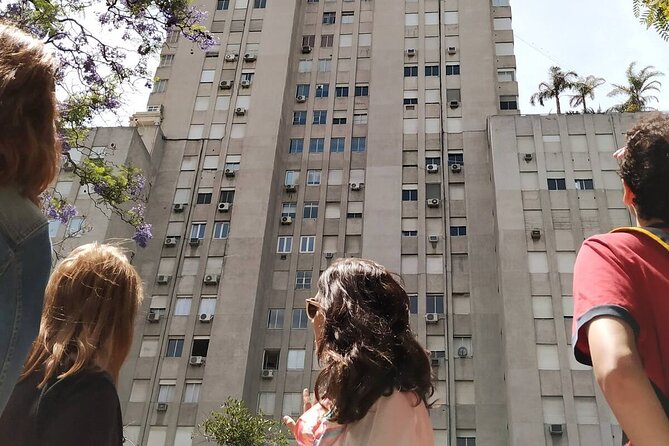
Towering over the city’s skyline, Recoleta Cemetery stands as a testament to Argentina’s legacy of grandeur and opulence.
This renowned necropolis is a treasure trove of architectural marvels, housing the final resting places of the country’s most distinguished individuals.
Visitors are captivated by the intricate mausoleums, adorned with sculptures, stained glass, and ornate facades.
The cemetery’s highlight is the iconic Duarte family tomb, a stunning example of Neo-Gothic architecture.
Recoleta Cemetery offers a glimpse into the country’s storied past, where the wealthy and powerful have been laid to rest, leaving behind a lasting legacy.
- Architectural masterpieces
- Resting place of Argentina’s elite
- Opulent mausoleums and tombs
- Insight into the nation’s history
- Captivating blend of art and death
Argentina’s Economic Transformation
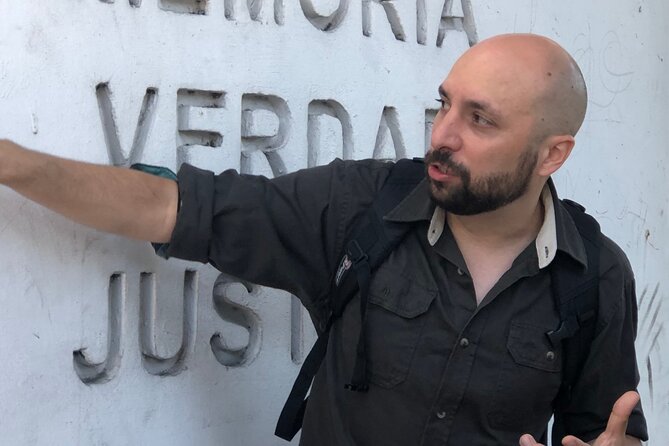
Argentina’s remarkable economic transformation over the past century has been a story of both triumph and turmoil. Once a prosperous nation with a thriving agricultural export economy, Argentina’s fortunes shifted dramatically as it grappled with periods of hyperinflation, political instability, and debt crises.
The rise and fall of import-substitution industrialization strategies, followed by the implementation of neoliberal reforms, have shaped the country’s economic landscape. Today, Argentina continues to navigate the complexities of its economic evolution, seeking to harness its abundant natural resources and human capital to foster sustainable growth and development.
The contrasts and contradictions inherent in this journey have profound implications for the country’s identity and its place in the global economy.
Frequently Asked Questions
Who Were the Most Prominent Families Buried in Recoleta Cemetery?
The most prominent families buried in Recoleta Cemetery are the Duartes, the Alvears, the Ayerrzas, and the Anchorenas – wealthy aristocratic families who played influential roles in Argentina’s political and economic history.
How Does Recoleta Cemetery Reflect the Social Hierarchy of Buenos Aires?
Recoleta Cemetery reflects Buenos Aires’ social hierarchy, as it’s the final resting place for the city’s elite and prominent families. The lavish mausoleums and memorials showcase the power and influence of Argentina’s aristocracy.
What Was the Architectural Style of the Belle Époque Buildings in Buenos Aires?
The Belle Époque buildings in Buenos Aires featured an architectural style characterized by ornate, grandiose designs with elements of French Neoclassicism, reflecting the city’s aspirations to emulate the affluence and elegance of Europe during the late 19th and early 20th centuries.
How Did Argentina’s Economic Policies Impact the Development of Buenos Aires?
Argentina’s export-oriented agricultural policies in the late 19th century fueled Buenos Aires’ development, leading to the construction of grand Belle Époque buildings and transforming the city into a cosmopolitan center of trade and wealth.
What Cultural Traditions or Practices Are Associated With Visiting Recoleta Cemetery?
Visiting Recoleta Cemetery is a cultural tradition in Buenos Aires. Visitors often leave flowers, notes, and personal items at the ornate tombs, honoring the memory of the city’s influential and aristocratic figures buried there.
Recap
The Recoleta Cemetery is a powerful symbol of Argentina’s aristocratic past. Its grandiose mausoleums and sculptures showcase the wealth and influence of the country’s elite. As visitors explore this architectural marvel, they gain insights into the socio-economic dynamics that have shaped Argentina’s history. The cemetery stands as a testament to the nation’s transformation, reflecting both its opulent legacy and its ongoing journey of change.
More Tour Reviews in Buenos Aires
Not for you? Here's more things to do in Buenos Aires we have recnetly reviewed
- 2 Best Canoe And Kayak Experiences In Buenos Aires
- 9 Best 2 Day Tours In Buenos Aires
- 6 Best BBQ Experiences In Buenos Aires
- 25 Best Dining Experiences In Buenos Aires
- 20 Best Full-Day Tours In Buenos Aires
- 2 Best 3 Day Tours In Buenos Aires
- 10 Best Sailing Experiences In Buenos Aires
- 19 Best Photography Experiences In Buenos Aires
- 5 Best Coffee Tours And Tastings In Buenos Aires
- 25 Best Dinner Tours In Buenos Aires
- 5 Best Craft Beer Tours And Tastings In Buenos Aires
- 25 Best Cruises And Boat Tours In Buenos Aires
